Confessions of a recreational Pilot
Well, not really confessions, and the term 'recreational' will need some explanation, especially since I'm a recreational commercial pilot. So in this part I would like to describe what it is to be a pilot, flying for the sheer enjoyment of being able to do so, and try to explain (even to myself) why it is worth spending both time and money to pursue this – lots of time and lots of money, I might add.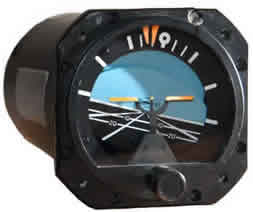
Some Background
I am a commercial pilot with an instrument rating, flying single engine land, i.e. the airplanes I fly have to have wheels and be landed on solid surfaces like asphalt, grass, etc. Also, they can only have one power plant and that has to be a propeller (you need a special rating to fly jets). Soon, this will hopefully be extended to multiengine flying.
Well, some news. I did get my multiengine rating and can now fly propeller airplanes with more than one engine (still need that jet rating to change the propellers with jet engines). Since flying a twin is not much more complicated than flying a single engine airplane, as long as everything is working fine, the multi-engine rating is obtained by mainly flying a two-engine airplane with only one engine. Every flight maneuver except take-off is practiced with only one engine working. The take-off is special and the most critical phase of a multi-engine flight.
My total flying time at the moment (September 2010) is about 720 hours. My flying career started relatively late. Although I had always been fascinated by airplanes and flying, it was not until almost 10 years ago that I even contemplated the idea of becoming a pilot. Anything aviation related, or rocket related for that matter, would stop me dead in my tracks. I would always ask for window seating when flying commercial (and still do), and didn't mind spending time at airports. Strange behavior for most people, especially since I've had to do quite a bit of commercial flying in my normal job as an astrophysicist. Over the years I made a few flights in small General Aviation airplanes with friends, but never seriously considered the possibility of getting my own pilot license. The excuses were lack of time and lack of money, for the most part in combination.
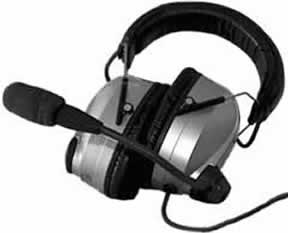 Then one day my wife give me the Microsoft Flight Simulator program as a birthday gift. Why she would give such a present to a grown up and serious (I guess) person is still beyond me, but tinkering with that program quickly led me to contact a local flight club in Sweden (where I was living at the time). Before I even know what was happening I was signed up to take the ground school for a Private Pilot license, to be followed by practical flying lessons. I was ecstatic. This was in January 2001. By early May I had passed the written exam and started my flying lessons. The real flying was done at Varberg Flygklubb, a flying club in southern Sweden. Flying out of a 600m (1950 feet) long grass strip, using Piper Cherokees (Warrior and Archer), I finally earned my JAR Private Pilot license on June 28 2002. The JAR designation means that the license is 'sanctioned' by the European Union. However, as fate would have it, I moved to Baltimore in the US less than 2 months after having passed the check-ride. This meant a new environment, new rules and, of course, a new language to communicate with.
Then one day my wife give me the Microsoft Flight Simulator program as a birthday gift. Why she would give such a present to a grown up and serious (I guess) person is still beyond me, but tinkering with that program quickly led me to contact a local flight club in Sweden (where I was living at the time). Before I even know what was happening I was signed up to take the ground school for a Private Pilot license, to be followed by practical flying lessons. I was ecstatic. This was in January 2001. By early May I had passed the written exam and started my flying lessons. The real flying was done at Varberg Flygklubb, a flying club in southern Sweden. Flying out of a 600m (1950 feet) long grass strip, using Piper Cherokees (Warrior and Archer), I finally earned my JAR Private Pilot license on June 28 2002. The JAR designation means that the license is 'sanctioned' by the European Union. However, as fate would have it, I moved to Baltimore in the US less than 2 months after having passed the check-ride. This meant a new environment, new rules and, of course, a new language to communicate with.
In act, most of my flying has been in the US. When I arrived in Baltimore I had amassed a total of 75 hours of flying time, most of it under dual command (that is, with a certified flight instructor onboard). At the time of writing (September 2008), I have about 610 hours as Pilot in Command (PIC) and an FAA Private and Commercial license with instrument privileges (all will be explained further down).
Learning to Fly
There is an old saying that a pilot license is a 'ticket to learn'. Well, it's true and the learning process starts the moment you walk into a flight school and it never stops. At least is shouldn't. 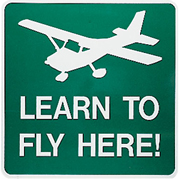 Having had to pass the Private Pilot check-ride in two different countries, I had to get some experience in learning to fly. I got my first Private Pilot license in Sweden. There, as in most of Europe, most of the flight training is done by non-profit Flying Clubs. This makes it cheaper than if it is done in a commercial school. When I moved to the US I could fly using my Swedish license, acquiring a waiver from the FAA. However, it soon became evident that I'd be better of with a 'pure' US license. So I took the written and practical tests for a FAA Private Pilot license (PPL). In fact, I did my check-flight for PPL the same day as my check-ride for my instrument rating (more about that further down).
Having had to pass the Private Pilot check-ride in two different countries, I had to get some experience in learning to fly. I got my first Private Pilot license in Sweden. There, as in most of Europe, most of the flight training is done by non-profit Flying Clubs. This makes it cheaper than if it is done in a commercial school. When I moved to the US I could fly using my Swedish license, acquiring a waiver from the FAA. However, it soon became evident that I'd be better of with a 'pure' US license. So I took the written and practical tests for a FAA Private Pilot license (PPL). In fact, I did my check-flight for PPL the same day as my check-ride for my instrument rating (more about that further down).
Learning to fly is not too difficult, although it will take both time and dedication, and money. Apart from take-off and landing, there are only four ways of flying an airplane: straight and level, climb, descend, and turn. Some of these maneuvers can be combined, like a descending turn or a climbing turn (you better not try to combine straight & level with climbing or descending flight – your flight instructor will not be happy).
The first step is to get a Private Pilot License (there's also Recreational Pilot License, with special rules for lighter airplanes – I will not discuss this here since I don't know too much about it). A Private Pilot License (PPL) allows you to fly single engine airplanes, under Visual Flight Rules (that is, outside of clouds), day and night and with passengers. Then you can add 'endorsements', like High Performance (an engine with more than 200 hp), Complex (adjustable propeller and retractable landing gear). One can also add a tail-wheel endorsement. Then there are 'ratings', like Instrument Rating and Multiengine Rating. The instrument rating is probably the biggest step one takes after getting the PPL. Then one can get advanced 'licence's', like the Commercial License than is the first step to actually get paid for flying. I think you see the meaning of 'a ticket to learn'...
Rules to Fly By
Most of my non-flying friends are surprised by the lack of external control when I go flying. They think that all flying has to be supervised by air traffic control and that one has to inform 'them' (whoever 'them' is) that one is planning to take off, land or just fly through the air. However, in most cases, this is not necessary. As long as one is flying below 18,000 feet, stay clear of clouds (with some restriction on how much clearance of cloud is needed) and isn't flying inside a restricted airspace, it is not necessary to talk to anyone unless one chooses to do so. In this case one is abiding by the rules of 'see and avoid', or, in a somewhat cynical manner, believing in the theory of the 'big sky'. The primary responsibility of air traffic control (ATC) is namely to keep airplanes from flying into each other. However, if a pilot is flying outside of clouds, meaning that one has a view outside, it is up to the pilots to avoid hitting each other. Furthermore, most airports are uncontrolled, meaning that they do not have a tower with an air traffic controller. This doesn't mean that these airport are the aviation form of anarchy. It just means that the pilots themselves are responsible for controlling the traffic. For those who find this unnerving, don't worry, airports frequented by scheduled airliners do have a control tower.
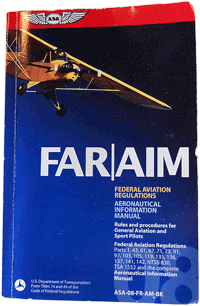 Of course there are rules to fly by. In fact, lots of rules. However, its much less than the non-flying public think – including me before getting my pilot license. Getting a Private Pilot License is not getting a right to fly, rather, one obtains the privilege to access the airspace system. This comes with a lot of responsibility but also, and surprisingly, a lot of freedom. The rules that do apply are called the FAR (Federal Aviation Regulations), and private flying is done under part 91. FAR part 91 contains 121 pages (then there is FAR Part 71 on Airspace definitions 5 pages; Part 67 on Medical Certification 11 pages; Part 61 on Airmen Certification 97 pages - yes they still call it 'airmen' - a holdover from the old days I guess), and that's all the regulations one needs to know. This allows one to fly with passengers as long as they don't pay you for the privilege – although you can still share the cost on an equal basis. To fly with paying passengers there's a different set of rules that apply, FAR part 135 (air taxi and charter), or FAR part 21 (airline operations).
Of course there are rules to fly by. In fact, lots of rules. However, its much less than the non-flying public think – including me before getting my pilot license. Getting a Private Pilot License is not getting a right to fly, rather, one obtains the privilege to access the airspace system. This comes with a lot of responsibility but also, and surprisingly, a lot of freedom. The rules that do apply are called the FAR (Federal Aviation Regulations), and private flying is done under part 91. FAR part 91 contains 121 pages (then there is FAR Part 71 on Airspace definitions 5 pages; Part 67 on Medical Certification 11 pages; Part 61 on Airmen Certification 97 pages - yes they still call it 'airmen' - a holdover from the old days I guess), and that's all the regulations one needs to know. This allows one to fly with passengers as long as they don't pay you for the privilege – although you can still share the cost on an equal basis. To fly with paying passengers there's a different set of rules that apply, FAR part 135 (air taxi and charter), or FAR part 21 (airline operations).
Enough about rules. They are important and necessary, but they do not define the experience of flying, they just mark the boundary conditions in which they take place. I just want to add one statement from the FARs. After defining all the rules and boundary conditions, the FAR states that the PIC (Pilot In Command) is the final authority to the safe outcome of a flight. This is powerful stuff! It means that a PIC can break any rule in the book (i.e. the FAR) if it is so required for the safe outcome of a flight. Of course, if a pilot do break the rules, it has to be for a good reason and one that can be justified in the aftermath.
Visual Flight Rules
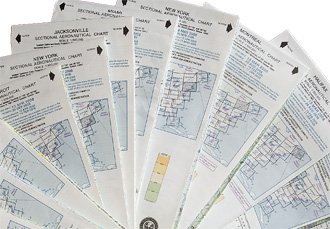 Visual Flight Rules (VFR) simply means that you have to see where you're going. This is necessary both for navigation and for avoiding bumping into other airplanes in the air – always a bad idea. The Federal Aviation Regulations (see above) defines how good, or bad, depending on how one looks at it, the weather conditions must be for a flight to be conducted as an VFR flight. The minimum conditions are very generous indeed and I for one would not like to fly under those minimum conditions – at least not under Visual Flight Rules. This is the time for instrument flying.
Visual Flight Rules (VFR) simply means that you have to see where you're going. This is necessary both for navigation and for avoiding bumping into other airplanes in the air – always a bad idea. The Federal Aviation Regulations (see above) defines how good, or bad, depending on how one looks at it, the weather conditions must be for a flight to be conducted as an VFR flight. The minimum conditions are very generous indeed and I for one would not like to fly under those minimum conditions – at least not under Visual Flight Rules. This is the time for instrument flying.
Instrument flying will be discussed below. Here I just want to say that that I don't favor one set of flight rules over the other. Both define their one set of challenges and rewards. Pilots need to master both.
Instrument Flight Rules
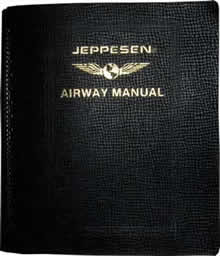 Instrument Flight Rules (IFR) has to be followed when flying without outside references, that is when flying on the clouds. However, one can fly under IFR also when the weather is clear and a million. IFR means that air traffic control (ATC) is supervising the flight. ATC's main role is separation of traffice. One needs to file a flight plan and then obtain clearances from ATC to fly the planned (or given by ATC) route. An IFR flight plan will ensure obstacle clearance, reception ofcommuication and navigation signals, and traffic separation. An IFR flight plan will also contain an approach into the destination airport, a procedure to get the airplane from the cruise environment all the way to the ground. This can be flown in clouds, or in severe clear weather.
Instrument Flight Rules (IFR) has to be followed when flying without outside references, that is when flying on the clouds. However, one can fly under IFR also when the weather is clear and a million. IFR means that air traffic control (ATC) is supervising the flight. ATC's main role is separation of traffice. One needs to file a flight plan and then obtain clearances from ATC to fly the planned (or given by ATC) route. An IFR flight plan will ensure obstacle clearance, reception ofcommuication and navigation signals, and traffic separation. An IFR flight plan will also contain an approach into the destination airport, a procedure to get the airplane from the cruise environment all the way to the ground. This can be flown in clouds, or in severe clear weather.
The instrument rating is a very valuable addition to any pilots knowledge bas. Being able to control the airplane with reference to instruments only is a safety factor even if one never flies in real weather situations. One of the deadliest type of accidents when flying is 'VFR into IMC', that is trying to fly with outside reference (VFR) in the clouds (Instrument Meteorological Conditions – IMC). Also, all flying at altitudes above 18000 feet is done under IFR whether it is cloudy or not.
Stuff Pilots Need
Pilot needs stuff, lots of stuff. There are few activities where one can find more gadgets than aviation. Of these some (fairly few) are absolutely necessary. Most are just 'nice to have' type of gadgets.
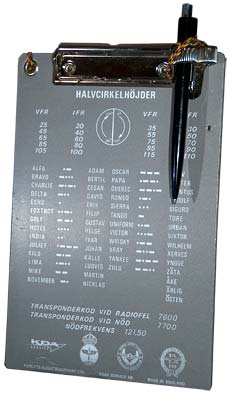 Among the essentials are of course things like a headset, a transceiver, all the charts and other papers that are needed for navigation. Today it is possible to have all the charts, approach plates and rlated documents on an iPad, and the iPad has quickly become a neccessary item. I would also list a good CO detector as an essential item. You don't want to get woozy because of a leaking exhaust system while piloting an aircraft (see my story on when a CO detector saved the day). A good hand-held GPS is also an essential item these days, especially one that picks up weather data and that can show TFRs and airspace in general.
Among the essentials are of course things like a headset, a transceiver, all the charts and other papers that are needed for navigation. Today it is possible to have all the charts, approach plates and rlated documents on an iPad, and the iPad has quickly become a neccessary item. I would also list a good CO detector as an essential item. You don't want to get woozy because of a leaking exhaust system while piloting an aircraft (see my story on when a CO detector saved the day). A good hand-held GPS is also an essential item these days, especially one that picks up weather data and that can show TFRs and airspace in general.
Then there are all the 'good-to-have' stuff. A pilot bag to put all your stuff in, spare pens, extra batteries, fuel sump, band-aids (remarkably handy for many things in an airplane), flash light(s), pen holders, stop watch/timer, scale for weighing bags, magnifying glass, life vests (if you fly over water), life boat, etc, etc.
Where to go from here
What will be the next step? One can keep moving up in the aviation world by getting more adnvanced ratings and licenses. I currently have a multi-engine license with IFR priviliges, but rarely get a chance to make use of it. Ultimately, one can get a licese to teach, that is become a certified flight instructor. Airline Transport Pilot is the ultimate license and requires quite a lot of flying hours. However, the pursuit of licenses and ratings is not the only way to 'grow' as a pilot. The most important thing is to fly as often as possible, to always learn someting new and to be engrossed in aviation.
Tail winds to you all!!!
